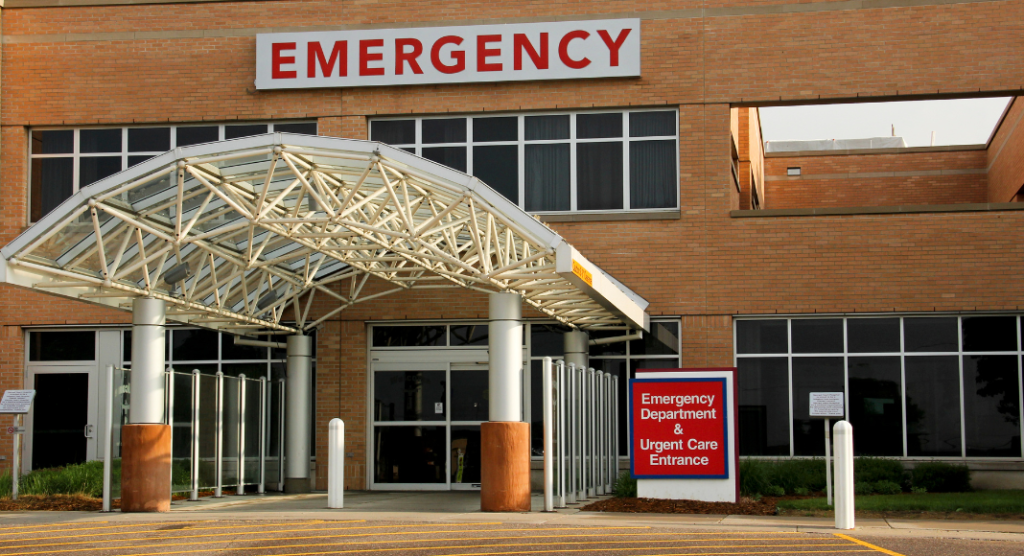
A few weeks ago I took my son to the emergency room at Prisma Health Richland hospital. This was the first time we’d gone to the ER in Columbia. (We’d previously been to an ER when living in Chicago and one in Hilton Head.) Since it was our first time, I wasn’t sure what to expect. There were some things I bargained for but other things I didn’t. With that in mind, I wanted to share my experience so that you can know what it’s like in case you ever need to take your child to the emergency room.
1. Expect a long wait
I knew we’d probably be in the emergency room for a few hours. After all, even though it’s an emergency room, you still need to wait to be seen due to there being many other people there as well. However, I didn’t expect that we’d be there for six and a half hours. Yes, we were there for six and a half hours.
We arrived at the emergency room at 5 p.m. and didn’t leave until 11:30 p.m. I’m not sure if it was busier because it was after hours for the pediatrician and normal doctor office hours, but it was packed. Even with as busy as it was, I still hadn’t expected we’d be there as long as we were.
All that to say, be ready to sit around and wait. My son and I both ended up very hungry and thirsty because neither of us had eaten since lunch time. I suggest bringing water and snacks. Obviously, if your child has a stomach bug and is vomiting, the snacks may not be a good idea. But if you are there for a different reason, you will definitely want snacks and a drink.
2. Use hand sanitizer and wear a mask
It’s an emergency room, so there are obviously going to be a lot of people there who are sick. You will be surrounded by children and adults who are coughing, vomiting, sneezing, etc. And if you’re on the children’s side of the ER waiting room, you’re going to be exposed to even more germs because we all know that kids aren’t the best at covering their mouths/nose when sneezing and coughing.
My son and I kept moving seats as people were called back so that we could get further away from a couple of specific people who were in there and who seemed very sick. Yes, he wasn’t feeling well, but I didn’t want him or me to come down with something even worse because we were exposed to the germs of those around us. There were multiple children who vomited on the floor while we were there, and it didn’t get cleaned up until at least 30 minutes later. There were also many children who were coughing, sneezing, had runny noses, and who had RSV.
Thankfully, the ER keeps masks on the check-in desk, so we were able to use those. I also had hand sanitizer in my purse that we used multiple times. The other reason you’ll want it is because the bathrooms are not the cleanest. And if you’re there for over six hours like we were, you’re going to eventually have to use the bathroom.
3. Be prepared to be getting up and down
As I said above, you will be waiting for a long time. And just because they call your name, doesn’t mean you’re going to be in and out once they do. After we checked in, we waited for a while and then were called to get my son’s vitals taken (weight, height, temperature, etc.).
We then waited about another hour after that before he got called back to be seen by a nurse. The nurse asked what was going on and took all of our information. After a little while, a doctor came by and spoke with us. We waited in that same area a little longer until another nurse came to give my son some medicine. Then they told us they wanted to do an x-ray on my son and sent us back out to the waiting room.
It was at least another hour before the x-ray got taken and then we were sent back to the waiting room again. We then had to wait three more hours in the waiting room until they were finally able to bring us to the back to the pediatric ER exam rooms. Once we were back there, we spent an hour and a half there talking to nurses and the doctor, getting the results of the x-ray, and having my son treated.
So, as you can see, it was a lot of back and forth. Hence the six and a half hours in the ER. Depending on what you are in the ER for, this amount of time could change. But if they are busy, as they were the night we were there, you may be sent back and forth from being examined to being in the waiting room and back again.
 4. Even if you think you should be, you may not be prioritized over other people
4. Even if you think you should be, you may not be prioritized over other people
We were in the ER because my son was having bad stomach pain. And, of course, because I’m his mother and a worrier, the first thing I thought of was his appendix. I told the check-in desk my concerns, but even so, we were not considered priority. You get seen in the order you come in.
There was a man who came in while we were there who was literally doubled over in pain and clearly in anguish. He could hardly move and it was very clear he needed help. It was so bad that I went to the desk and asked if he’d be prioritized and they said no because there were other people who came in first.
So, even if you think you should be seen before someone else who was there before you, you won’t be.
5. Follow up with your pediatrician
The doctors in the emergency room told me that they thought my son had a virus that caused residual stomach pain. They also said it could have been the latest strain of COVID, which causes stomach issues. However, they didn’t do a COVID test to find out, and I wasn’t convinced that having severe stomach pain for a full week was the result of a virus.
I gave my son two at-home COVID tests the following day and both were negative. Since my son was still having pain, I made an appointment to see the pediatrician. The pediatrician didn’t even mention the word “virus.” He examined my son in the office and had a basic blood test and urinalysis done while we were there. He also had us get some bloodwork and an ultrasound done at the children’s hospital to check for other causes, and I’m glad he did.
While the doctors in the emergency room did what they could, I didn’t feel like it was the most thorough exam. I felt much better after the pediatrician examined him and we had the follow up tests done.
6. If you’re there for an injury, be prepared to answer questions
This one doesn’t apply to this recent ER visit, but to our previous one. But I wanted to mention it so that you are prepared. When my youngest son was three, he broke his arm. We were visiting someone at their condo in Hilton Head and he jumped from the couch to the ottoman. What we didn’t know was that the ottoman had wheels on it, so when he landed on it, it moved and he fell off.
When we realized it was most likely broken we took him to the ER. Because it was a broken bone, we got asked a LOT of questions by the nurses and doctor. When we checked in, the woman at the check-in counter asked us multiple times how the injury happened. Then, when he was taken into a room the nurse asked us the same questions, plus more. She also asked our son about how he had gotten hurt. When the doctor came in he asked us the same questions again. And then the nurse came in one more time and asked my husband and I about the injury yet again.
I understand that with certain injuries they want to make sure there is no child abuse happening. I get that. However, I felt like I was being interrogated and it was very frustrating. All I wanted was for my son to get the care he needed and they kept on acting as if my husband and I had hurt our son on purpose. Again, I understand why they act that way, but it didn’t make it easier or lessen the fact that I felt like they thought we were lying to them and had injured our son ourselves.
Hopefully you will never have to take your child to the emergency room. But if you do, I hope these insights help you be more prepared.














